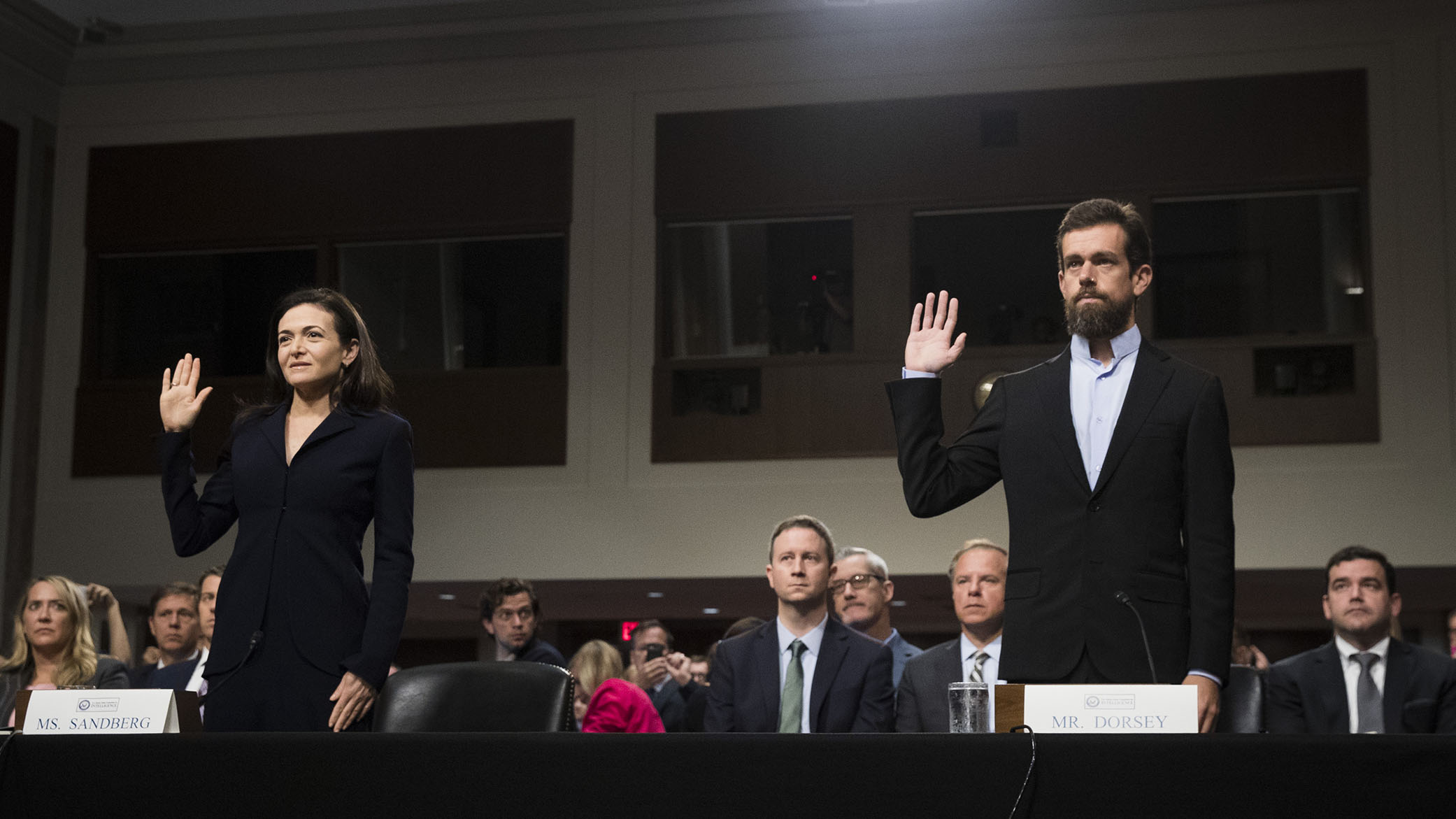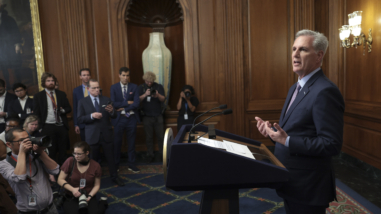How states are experimenting with digital political advertising regulation: Interview with Campaign Legal Center’s Erin Chlopak

The Special Counsel’s long-awaited report on Russian election interference confirms that a central feature of Russia’s influence campaign was widespread dissemination of divisive political content online, including digital ads that explicitly supported or attacked presidential candidates.
Unsurprisingly, Russia did not disclose its political ad spending to federal regulators or the American public. Instead, Russia exploited legal loopholes that allowed its advertising campaign to run largely undetected by law enforcement agencies until it was too late.
With this backdrop — and even after digital ad spending exceeded $1 billion both in last year’s midterms and in the 2016 presidential elections — it is shocking that online ads remain largely exempt from campaign finance disclosure requirements under federal law.
There is some good news, though, according to Erin Chlopak, Director of Campaign Finance Strategy at Campaign Legal Center (CLC), a nonpartisan public interest group that works to protect and strengthen the U.S. democratic process, and a grantee of the foundation’s Madison Initiative. In the face of federal inaction, states are taking important steps to ensure digital transparency. In particular, states are passing laws to (1) make clear that digital ads “count” for purposes of political advertising rules, (2) require digital ads to be made available for public review, and (3) ensure that digital ads identify their sponsors. Here are three takeaways from my conversations with Chlopak.
State laws are closing loopholes so that existing campaign finance rules apply to digital.
Russia took advantage of the fact that the laws governing political advertising at the federal level and in many states were written decades ago, when television advertising dominated campaigns and digital advertising didn’t even exist. Some of these old laws specifically cover only TV and radio advertising, and others are ambiguous as to whether they reach digital ads, Chlopak said. “So one of the easiest ways that a state can start to address digital advertising loopholes is by making clear that the state’s laws do apply to digital.”
Since 2016, several states have updated their laws to refer explicitly to online ads, according to CLC. Most notably, Vermont, Washington, and Wyoming each amended their campaign finance laws to extend reporting and disclaimer requirements to online political ads.
This approach has the benefit of simplicity: the state simply extends its existing regulatory regime to digital. But because digital ads differ from broadcast ads in some meaningful respects, other states have decided to enact more comprehensive legal frameworks to address the unique challenges of digital, as discussed below.
States are taking online political ads out of the “dark” through mandatory public archives.
Online platforms provide a unique mechanism for influencing voters without detection because they allow political ads to be microtargeted to specific audiences, while remaining unseen by others. This “dark ad” phenomenon played a key role in Russia’s ability to avoid detection in 2016.
“The leading proposal to address the ‘dark ad’ problem is to create public archives or repositories of digital ads,” Chlopak said, “thereby ensuring that ads targeted to a limited audience are preserved and available for law enforcement agencies and the public at large to review.” Longstanding federal law already requires publicly available records of information about the sources, costs, and distribution of political ads broadcast on TV and radio. Digital ad archives similarly make information about digital political advertising available to the public.
Following this approach, Maryland, California, and New York have enacted legislation that requires the creation of digital archives of information about online ads relating to candidates and ballot initiatives. According to CLC, the main policy question states face in enacting such a requirement is who will be responsible for creating and maintaining the archive: the online platforms that get paid to run the ads, or the government itself? While platform-based archives make digital ads accessible at the place where the public views the ads, a government-based archive that contains all digital political ads in a single, centralized location may make legal oversight more efficient. There are also questions about the relative costs to the platforms and government. Maryland and California require digital ad archives to be created and maintained by the online platforms. In contrast, New York requires ad purchasers to file copies of their digital political ads with the State Board of Elections, which is responsible for maintaining the public archive of those ads.
Chlopak notes that these three states have also adopted distinct approaches to defining which platforms and ads are subject to the digital archive requirement. New York’s rules apply to online platforms that average 70 million or more monthly U.S. visitors, and newspapers that would otherwise qualify as online platforms are exempt. Maryland has adopted a much lower threshold—100,000 or more monthly U.S. visitors—although the law’s application to certain small platforms has been challenged in court and is the subject of pending litigation. When it takes effect in January 2020, California’s law will essentially have no user threshold; the law will require an online platform to maintain a public archive of advertisements by certain advertisers who spend at least $500 in advertising on the platform. Thus, California’s law applies to a narrower scope of ad purchasers, but potentially subjects a wider array of online platforms to its public archive requirement.
These states also vary in the amount of information provided through the digital archive. Maryland requires online platforms to make public information about the sources and amounts paid for digital political ads, and to provide additional information, including a copy of the ad and details about the dissemination and targeting of the ad, to the state election board upon request. Under New York’s law, the state election board provides public online access to copies of digital ads. California requires more information: online platforms must include in their digital archives a digital copy of the ad, information about who purchased the ad and its cost, the number of impressions generated, when the ad was disseminated, and the candidate or ballot measure to which the ad refers.
In addition to state activity, some social media platforms have taken voluntary steps to archive certain political ads disseminated by their platforms. According to CLC, advocates who seek to prevent foreign election interference generally consider these voluntary measures to be insufficient, as they are not well-enforced and are subject to modification or cancelation at any time at the sole discretion of the platforms. In addition, platform disclosure practices vary widely, making it difficult to compare activities across platforms. A recent EU-focused effort by the Mozilla Foundation outlines several key components of an effective online ads archive, but there is room to refine this further in the US context.
States are requiring digital political ads to include information about sponsor and donors.
Another front where states are taking action is requiring clearer information to be displayed on the digital ad itself, similar to “this-message-approved-by” language in televised campaign ads. California’s law requires digital ad disclaimers that provide information not only about the ad’s direct sponsor but also the top three donors to that sponsor. Vermont and Washington State similarly require digital electioneering communications sponsored by PACs to include the names of top contributors.
Recognizing that digital advertising takes many forms — from full-screen desktop ads to smartphone banners — states are also wrestling with whether to allow small digital ads to substitute a modified disclaimer that redirects viewers to more information about the source of the ad (rather than requiring all the information to appear within the ad itself). California, Vermont, Washington, and Wyoming permit the substitution of a hyperlink to another website with the required disclaimer information when including the full disclaimer on the face of an ad is “impracticable” due to size or space constraints. New York and Maryland similarly permit digital and other political ads to include a modified disclaimer when the communication cannot accommodate a full disclaimer. “With options such as these, states are creatively experimenting with using the interactivity of digital advertising to give users critical information about the ads to which they’re exposed,” Chlopak said.
* * *
Closely monitoring the results of these legislative experiments will help us better understand the benefits and drawbacks of the different approaches and determine how states considering new legislation can best ensure Americans are informed about who is behind digital political ads.



